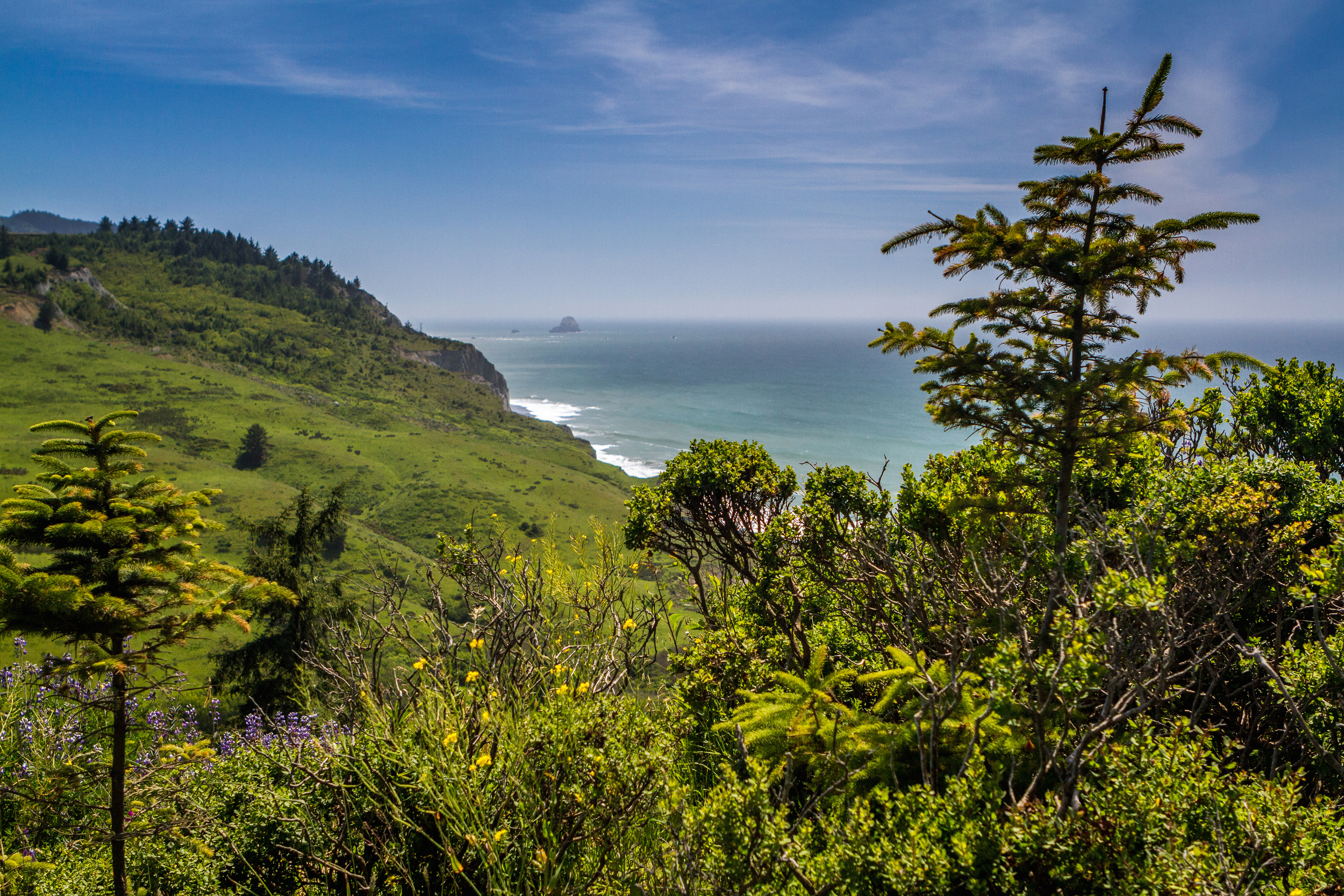Location: Humboldt County, CA
Notable Features: Beautiful hiking, scenic vistas, bird watching and wildflower viewing
Overview: South of the Eel river lie the Lost Coast Headlands, four hundred and sixty three acres of beautiful California Coast that offer an incredibly diverse range of activities. To the north, narrow beaches rest below crumbling bluffs and rolling mountainsides. The West offers a foraging habitat for shorebirds and gulls, slides and steep coastal bluffs. There are ponds surrounded by coastal scrub that provide a habitat for many avian species including warblers, sparrows, and hummingbirds. The grasslands in the area give a home to black-tailed deer, small rodents, raptors, and songbird species such as the Savannah Sparrow. The Fleener Creek and Guthrie Greek rest in the North and South of the area, respectively.
The Lost Coast Headlands offers incredible hiking. Guthrie Creek Trailhead offers a well maintained path that zig zag along the side of a hill with beautiful views of the headlands. Cape Mendocino can be seen from the trail, as well as scenic views of the beach and coastal vegetation. The trail is incredibly secluded and remote. The Fleener Creek trailhead offers a quick hike down switchbacks to the beach below the bluff.
Part of the area was part of a US Navy base before being decommissioned in 2009. The buildings have since been razed to help the site regain its natural aspects.
Lost Coast Headlands' creeks and ponds offer a habitat to many species. Guthrie Creek, running five and a half miles along the south side of the Lost Coast Headlands, is home to a population of the threatened steelhead and other marine wildlife. The Creek opens into a lagoon that houses more marine life and waterfowl. The two largest ponds also offer key habitats for the red legged frog and waterfowl.
The crumbling bluffs reveal the Headlands' scientific history. Fossils can be found of large scallop shells and whales. These fossils give a unique record of the north Pacific marine fauna during the Pleistocene period.
The Lost Coast Headlands also offers visitors many other opportunities. In addition to hiking, the Headlands offer birdwatching, wildflower viewing, picnicking, and beachcombing. Other parts of the California Coastal National Monument can also be seen from the Lost Coast Headlands.
The area has slowly been acquired by the Bureau or Land Management since 2000 when the lands were noted for their unique cascading cliffs, diverse geologic formations, and untrammeled beaches. Giving this beautiful place National Monument status would ensure that it is protected permanently.



